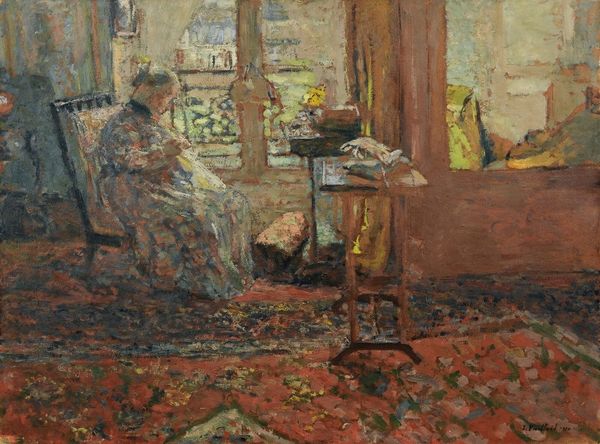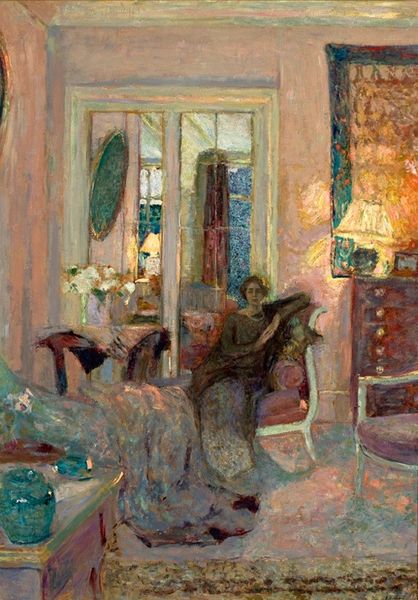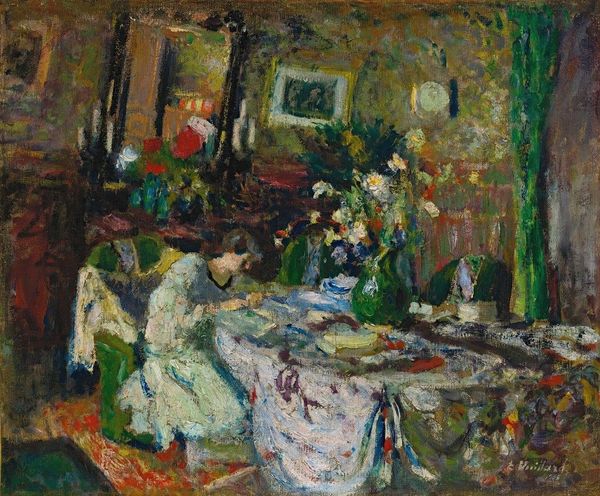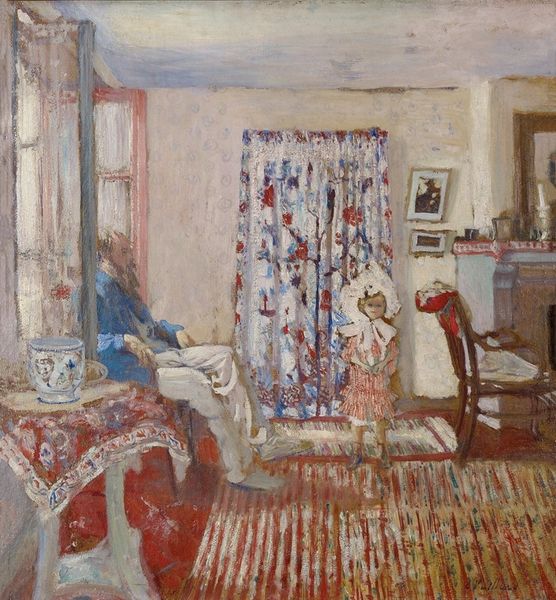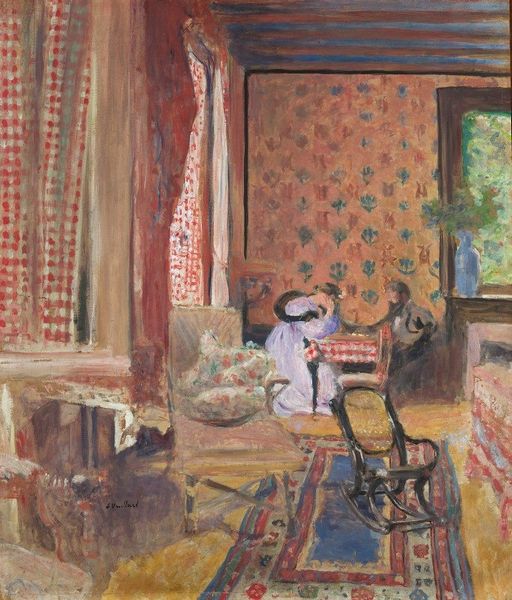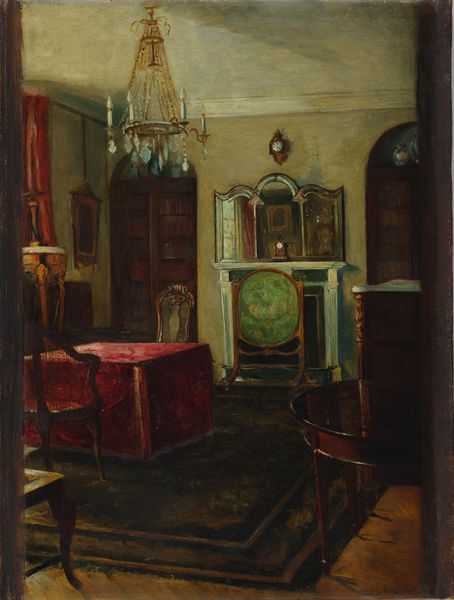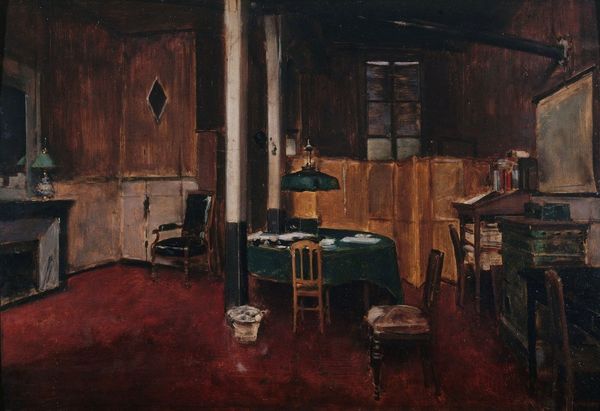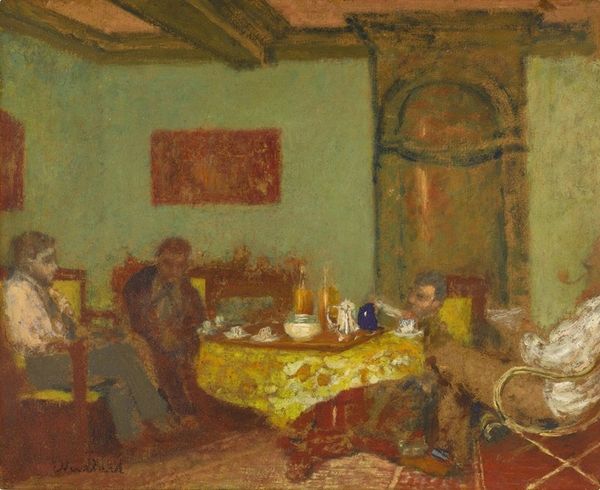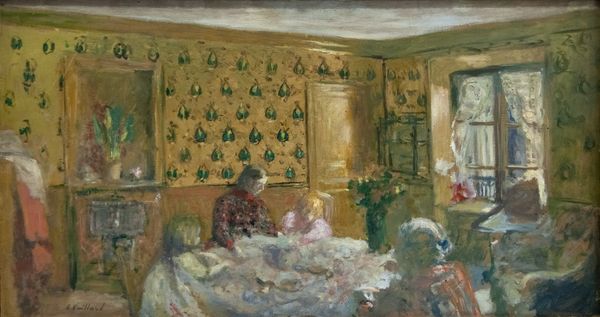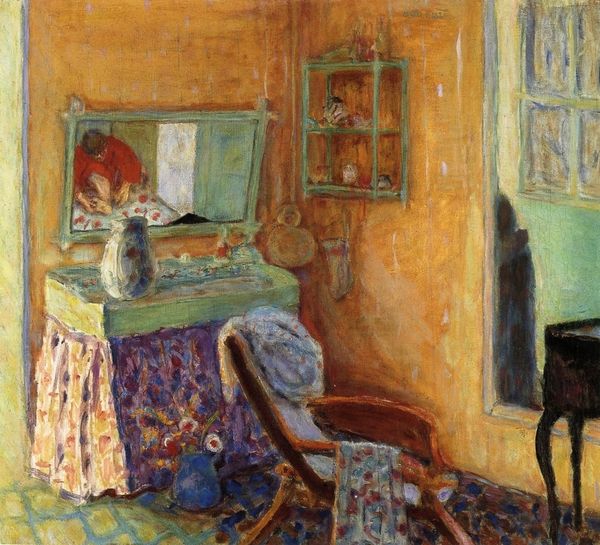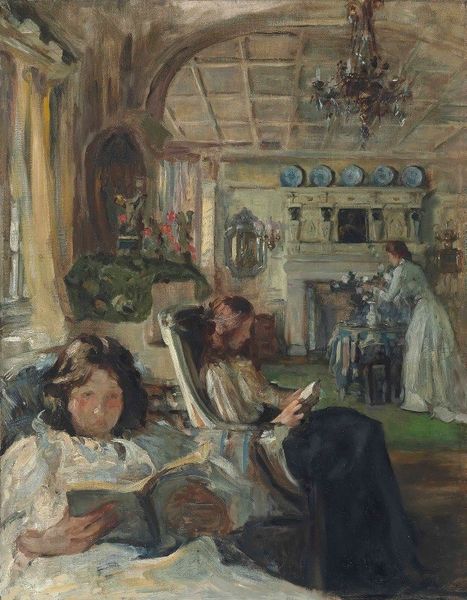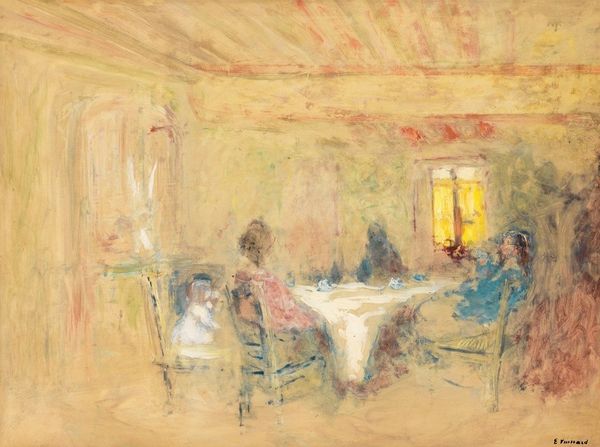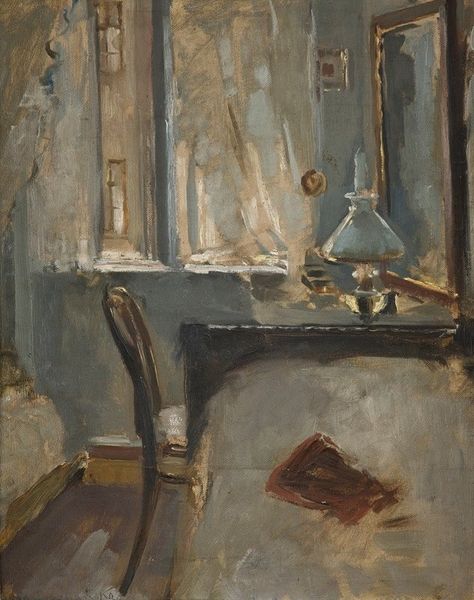
painting, oil-paint
#
portrait
#
gouache
#
figurative
#
painting
#
oil-paint
#
figuration
#
possibly oil pastel
#
oil painting
#
painterly
#
symbolism
#
genre-painting
#
watercolor
Copyright: Public Domain: Artvee
Curator: Let’s discuss James Ensor's "The Bourgeois Salon," painted in 1881. It captures a slice of life from the era. Editor: Immediately, I'm struck by the pervasive sense of enclosure. The palette is muted, dominated by browns and greens, creating an atmosphere that feels somewhat stifling. Curator: Notice the texture achieved through the visible brushstrokes and the materiality of oil paint, which was a burgeoning industry. The way Ensor applied it here seems to both define and dissolve form simultaneously. Also, note how spaces of bourgeois comfort were only made possible by extraction of natural materials and labor performed by others. Editor: Precisely! The arrangement within the frame adheres to familiar compositional structures but with slight tension, such as the placement of figures turning away from the viewer; they're situated to both invite us in and subtly bar our entry. There is a closed, self-referential element here, which is not unlike an old Dutch Master's interior. Curator: And what does it say about gendered roles? These spaces are, more often than not, stages where expectations are performed. The material objects—the plush carpets, the ornate furnishings—act as both symbols of status and active participants in that performance. This kind of life style necessitates leisure afforded only to those extracting profit elsewhere. Editor: I agree; objects as active characters. Furthermore, that window! It offers a chink of light but remains shrouded by heavy drapes, modulating any crisp lines; even that suggestion of outdoors is tamed, framed. A perfect metaphor for the way the bourgeoisie manage both engagement and containment. Curator: Right. And considering Ensor’s later embrace of the avant-garde and social critique, is this painting, perhaps, his way of capturing—even critiquing—the environment he came from and later moved beyond? Editor: The beauty of formal language and critical deconstruction opens many doors, right? It will remain something special, though! Curator: Definitely! A single canvas really can reflect so much.
Comments
No comments
Be the first to comment and join the conversation on the ultimate creative platform.
